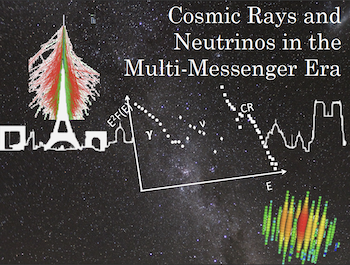Orateur
Description
Uncovering the sources of the astrophysical neutrinos observed by IceCube has been one of the most daunting challenges of neutrino astronomy since their discovery in 2013. By taking advantage of the multimessenger nature of these sources, it is possible to extract important information from them. In particular, we expect their production of TeV-PeV neutrinos to be accompanied by a $\gamma$-ray byproduct that undergoes electromagnetic cascades as it propagates to the Earth. This results in a GeV-TeV $\gamma$-ray flux which is expected to comprise the diffuse extragalactic $\gamma$-ray background (EGB) measured by Fermi-LAT. Since most of the EGB intensity has already been attributed to classes of sources that cannot account for the bulk of the IceCube neutrino flux, we are able to set stringent constraints on the spectra of the IceCube neutrino sources. We find that Fermi-LAT excludes any $\gamma$-ray-transparent class of sources whose neutrino spectrum extends below $\sim$10 TeV, irrespective of its redshift distribution. The marginally consistent case of a spectral break at 10 TeV requires a modification in our understanding of the EGB sources at energies below a few GeV. To avoid such complications, we are forced to imagine a significant contribution to the IceCube flux coming from objects opaque to high-energy $\gamma$-rays. Another way out is the possibility of such neutrinos being produced within the Galactic halo, although this solution seems to be in tension with limits from air shower experiments.
| Related session | Multi-messenger |
|---|

